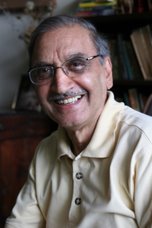How the King Kothi got its name
By Narendra Luther
The founder of Hyderabad, Mohammad Quli Qutb Shah had constructed, amongst other 14 palaces in the new city. His successors added to them from time to time. However, during the prolonged siege of the fort and occupation of the city by Aurangazeb in 1687 and the years that followed, most of those palaces were destroyed. When the foundations of the High Court building were dug in 1915, ruins of two of the palaces built by the founder, namely Hina Mahal and Nadi Mahal were unearthed.
When the Asaf Jahi rule started in 1724, Aurangabad was made the capital of the Deccan province of which Hyderabad was a part. However, after the demise of Asaf Jah I, due to internecine warfare amongst his immediate three successors, quite a good deal of the territory of the Deccan province was lost first to the French and then to the English. The Second Asaf Jah, Mir Nizam Ali Khan shifted his capital to Hyderabad in 1763. That necessitated the use of a palace by the Nizam and also a number of deodies and mansions for the nobles. The city then began to regain its earlier glory.
There used to be a palace where the present ‘Chow Mohalla’ palace complex stands. It was built by the Qutb Shahis. Asaf Jah II selected that place for his residence and a number of buildings were added to it. There were four principal palaces in that area viz., Afzal Mahal, Aftab Mahal, Mahtab Mahal and Tahniyat Mahal. It is said that they were a replica of the palaces of the Shah of Iran. Besides, there were the Jilo Khana, Khilwat Mubarak, Chandini Begum ki Haveli, Bakshi Begum ki Haveli, Manjli Begum ki Haveli, Moti Bangla, Shadi Khana etc. The third Nizam also stayed here as also the fifth Nizam.
The British did not want the sixth Nizam as a young man to live within the female quarters but to stay independently so as to devote his attention to his education. He therefore moved to what is called Purani Haveli. He was allowed to pay weekly visit to the old palace to see his mother and others. According to some this mansion was the palace of Mir Momin, the prime minister of Mohammad Quli Qutb Shah and later came into the possession of Ruknuddin, finally becoming the property of the Nizams. A number of buildings on both sides of the main palace were added to it for Mir Mehboob Ali Khan.
The seventh Nizam, Mir Osman Ali Khan was born there in 1886 and also stayed there during his early life. However, by that time the city had expanded a great deal; towards the north and east and he wanted to stay in the newer part of the city. When he was looking around for a suitable building he came upon one built by one of the Jamedars, Kamal Khan. The mansion was purchased from Kamal Khan and used as his residence. There was however, one hitch. Kamal Khan had put his initials ‘KK’ all over the building and its furniture and fittings. It was therefore a problem to remove those initials without disfiguring the building and furniture. At that time some clever courtier suggested to the Nizam that instead of removing those initials, a suitable name to the new residence of the Nizam which could make appropriate use of the initials. The name suggested was King Kothi. It was a hybrid name half English and half Urdu and sounds rather strange to Indian ears. Also, we associate ‘palace’ with the residence of a ruler and nor merely a ‘kothi’ which means a bungalow or at best a mansion.
The King Kothi complex had several buildings in two groups. The western half of the building was known as ‘Nazri Bagh’. The Nizam used to stay there. The entrance to that had always a thick tarpaulin curtain draped on it. It therefore came to be known as the ‘Purdah Gate’. In course of time, the purdah (curtain) became to look quite shabby but it wasn’t replaced. One couldn’t imagine that the ruler of the largest Indian State and the richest man of the world had his residence behind that shabby curtain.
Incidentally, it is interesting to note that no Nizam ever sat on the throne, or wore a crown. Also unlike most rulers, they were buried unostentatiously in simple graves - most of them in the compound of the Mecca Masjid and only two of them outside. It is therefore not surprising that residence of the last Nizam was a ‘kothi’ and not a palace.
Though he stayed in King Kothi, the seventh Nizam religiously visited the Purani Haveli every evening to pay his respects to his mother. When he drove in the old car, the traffic on the route was stopped by the blow of four whistles of policemen on duty and people had to either to prostrate to pay their respects to him, or to disappear into the adjoining streets.
The Nizam died in 1967. In 1980 the Government of Andhra Pradesh converted the eastern half of the building into a general hospital and named it The King Kothi Hospital. The Nazri Bagh area has been walled of and continues to belong to the private estate of the Nizam.
The Nazri Bagh is closed and is not open to the public.
Archived by www.mygoldencopy.com
